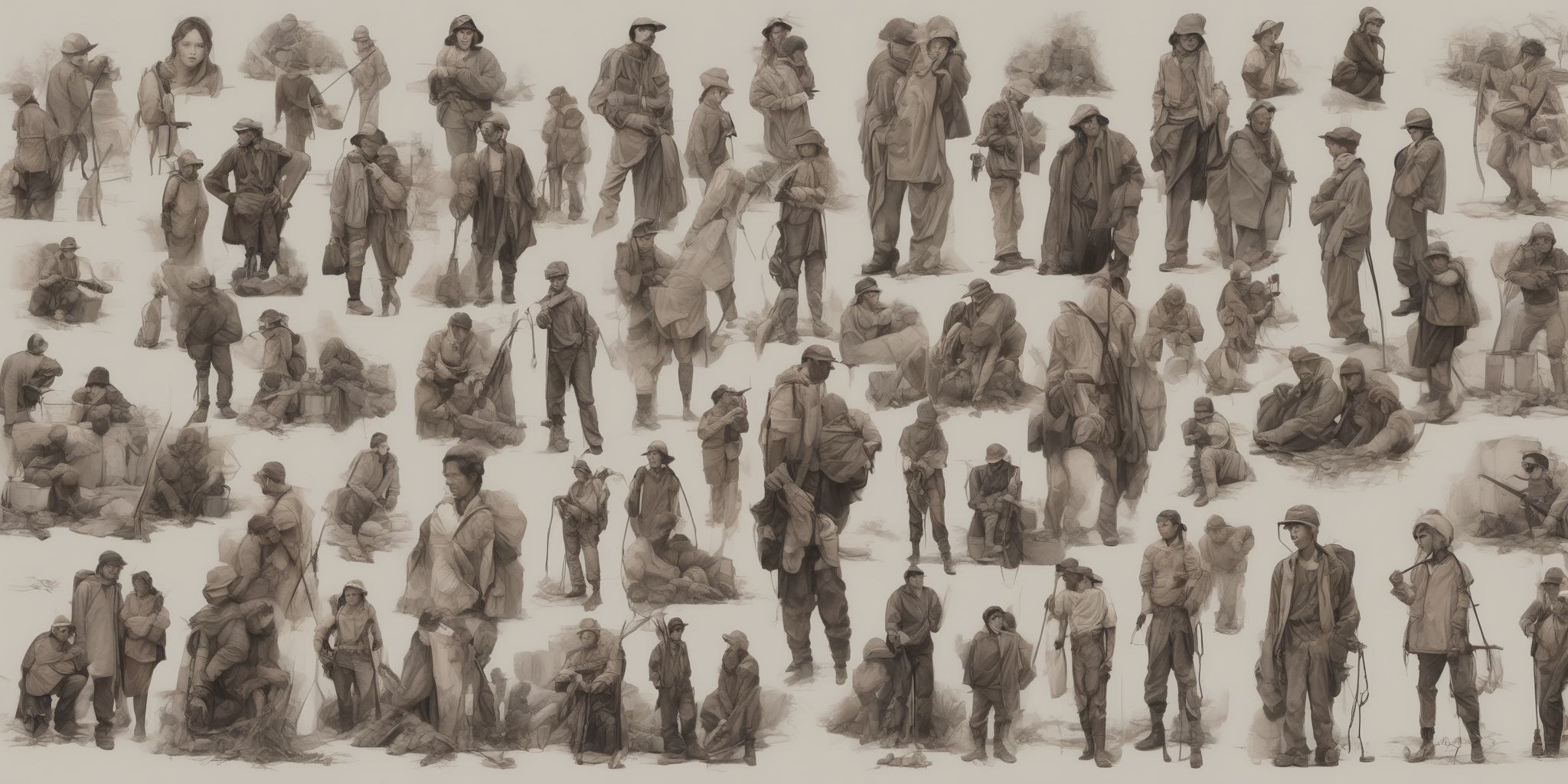Demystifying Insurance Groupings: What You Need to Know
Insurance can often feel like a mysterious beast, with a multitude of confusing terms and bewildering groupings. From Group 1 to Group 50, the jargon alone is enough to make your head spin. But fear not!
In this article, we will demystify the world of insurance groupings, breaking down the complexities into easy-to-understand concepts. So, if you've ever scratched your head wondering why your car insurance falls into a certain group or what impact it may have on your precious savings, hold tight because we're about to shed some light on this enigmatic topic. By the end, you'll be equipped with the knowledge necessary to navigate the insurance realm like a seasoned pro. Buckle up, and let's dive into the world of insurance groupings together!
Understanding Insurance Groupings
Understanding insurance groupings is important when selecting the right policy for your needs. Insurance companies group similar risks together to determine premiums and coverage options.
For example, drivers with a history of accidents or tickets may be grouped as high-risk and charged higher premiums. On the other hand, those with a clean driving record may be grouped as low-risk and offered lower rates. Understanding these groups allows you to compare policies and find the best fit for your situation. By considering your risk profile and the group you fall into, you can make informed decisions and potentially save money on your insurance premiums.
Why Insurance Groupings Matter
Insurance groupings are important because they help insurers to effectively manage risk and set premiums. By categorizing policyholders into groups based on factors such as age, location, and driving record, insurance companies can calculate the likelihood of a claim being made and adjust the cost accordingly.
For example, younger drivers may be grouped together as they are statistically more likely to be involved in accidents. This allows insurers to offer more accurate and competitive pricing for different groups.
Additionally, groupings enable insurers to offer tailored policies and benefits to specific segments, such as discounts for low-risk individuals or specialized coverage for high-risk occupations.
Types of Insurance Groupings
Auto Insurance Groupings
Auto insurance groupings are a way for insurance companies to categorize and assess risk levels for different vehicles. These groupings are based on various factors such as the make, model, age, and performance of the vehicle. Groupings determine the cost of insurance premiums, with higher-risk vehicles assigned to higher groups.
For example, sporty and high-performance cars usually fall into higher insurance groups due to their increased likelihood of accidents and theft. On the other hand, compact and low-powered cars typically fall into lower insurance groups as they are considered less risky.
Understanding auto insurance groupings can help individuals make informed decisions when purchasing or renting a vehicle, as it provides insights into potential insurance costs. It is advisable to consider insurance groupings alongside other factors like personal driving history and budget to find the most suitable coverage at an affordable price.
Factors Affecting Auto Insurance Groupings
Factors affecting auto insurance groupings include the make and model of the vehicle, the driver's age, and the driver's history. The make and model of the car can influence the cost of insurance due to factors such as its safety features and repair costs. Younger drivers generally face higher insurance premiums due to their lack of driving experience.
Additionally, a driver's history, including their past accidents and traffic violations, can impact their insurance rates.
For example, drivers with a history of accidents or speeding tickets may be seen as high-risk and face higher premiums.
How to Find Your Auto Insurance Grouping
Finding your auto insurance grouping is a straightforward process that can help you choose the right coverage and save money. Start by gathering information about your vehicle, including its make, model, and year. Then, research the different insurance groupings and their associated costs. This information is often available on insurance company websites or through independent resources.
Once you have identified your vehicle's grouping, you can compare quotes from various insurers to find the best rates for your coverage needs. Remember, each insurer may have different groupings, so it's important to compare multiple options to ensure you're getting the most competitive rate.
Home Insurance Groupings
Home insurance groupings categorize insurance policies based on the coverage they provide. These groupings help individuals select the right policy for their specific needs. The most common groupings include basic, standard, and comprehensive plans. Basic plans offer limited coverage at a lower cost, ideal for homeowners on a budget. Standard plans provide a broader range of coverage, including protection against theft, fire, and natural disasters.
Comprehensive plans offer the highest level ofcoverage, protecting against both property damage and liability claims. By understanding these groupings, homeowners can make an informed decision when selecting their insurance policy.
Determining Factors for Home Insurance Groupings
Determining factors for home insurance groupings are based on various considerations such as the location of the property, the age, and condition of the house, and the homeowner's claims history. Location plays a significant role as houses in high-risk areas, such as those prone to natural disasters or crime, may require higher insurance premiums.
Older homes, especially those with outdated electrical or plumbing systems, may be grouped together and face higher premiums due to the increased risk of damages.
Additionally, homeowners with a history of frequent claims may be placed in a higher insurance group as they are deemed more likely to file future claims. These factors are assessed by insurance companies to categorize properties and determine appropriate coverage and premiums.
Finding the Right Home Insurance Grouping
When it comes to finding the right home insurance grouping, it's important to consider your specific needs and budget. Start by assessing the value of your home and its contents, as well as any potential risks in your area. This will help you determine the level of coverage you require.
Additionally, it's beneficial to compare quotes from different insurance providers to ensure you're getting the best possible deal. Remember to read the policy documents carefully and ask questions if anything is unclear. By taking these steps, you can make an informed decision and find the home insurance grouping that suits you best.
Health Insurance Groupings
Health insurance groupings are an effective way to categorize different types of health insurance plans. These groupings help individuals and employers choose the most suitable option based on their specific needs. The two main types of health insurance groupings are employer-based coverage and individual coverage. Employer-based coverage is provided by employers to their employees, while individual coverage is purchased directly by individuals or families.
Within these groupings, there are further subcategories, such as preferred provider organizations (PPOs) and health maintenance organizations (HMOs), which offer different levels of flexibility and cost. Understanding the different health insurance groupings is crucial for making informed decisions and selecting the most appropriate coverage.
Key Elements Influencing Health Insurance Groupings
- Age: Younger individuals generally have lower healthcare needs and expenses, leading to lower insurance premiums. On the other hand, older individuals may require more medical attention, resulting in higher premiums.
- Occupation: Certain professions present higher risks of injuries or illnesses, which may affect insurance groupings. For example, jobs involving heavy physical labor or exposure to hazardous materials may necessitate higher coverage.
- Pre-existing Conditions: Medical conditions that exist before obtaining insurance coverage can impact groupings. Individuals with pre-existing conditions may face higher premiums or limited coverage options.
- Lifestyle Factors: Personal habits, such as smoking or excessive alcohol consumption, can increase the risk of health complications. Insurers may adjust groupings accordingly to reflect these behaviors.
- Geography: Healthcare costs can vary significantly based on the region or state. Insurance groupings may consider the average medical expenses in the insured's location to calculate premiums.
By considering these key elements, insurers can create appropriate groupings that reflect individuals' different risk profiles, enabling fair and effective health insurance coverage.
Selection Tips for Health Insurance Groupings
When selecting health insurance groupings, it's important to consider the specific needs of your employees. A good starting point is to assess the demographics of your workforce and their healthcare requirements.
Life Insurance Groupings
When it comes to insurance groupings, life insurance is an important category to consider. Life insurance provides financial protection to the policyholder's beneficiaries in the event of their death. There are different types of life insurance groupings, such as term life insurance and whole life insurance. Term life insurance provides coverage for a specific period, usually 10-30 years, while whole life insurance covers the insured's entire lifetime.
Understanding the different options and their benefits can help individuals choose the right life insurance grouping based on their needs and financial goals. It's important to carefully review the terms, coverage, and premium costs before making a decision.
Factors Considered in Life Insurance Groupings
- Age: Insurers typically categorize individuals into different age groups to assess the risk associated with their life insurance policies. Younger policyholders may have lower premiums due to their lower mortality risk, while older individuals may face higher premiums as their likelihood of mortality increases.
- Health and Medical History: Insurers consider the applicant's overall health and medical history to determine their insurability and insurance rates. Factors such as pre-existing conditions, chronic illnesses, and lifestyle choices like smoking can affect the premium pricing.
- Occupation and Lifestyle: The nature of an individual's occupation and lifestyle can impact the risk they pose to the insurer. Those engaged in hazardous jobs or hobbies might be charged higher premiums to compensate for the increased likelihood of accidents or injuries.
- Gender: Historically, women have had longer life expectancies than men, which influences their life insurance premiums. However, some countries have prohibited gender-based pricing discrimination, resulting in equal rates for both genders.
- Coverage Amount and Policy Type: The extent and type of coverage desired by the applicant play a role in determining their insurance group.
The policy options, such as term or whole life insurance, and the chosen benefit amount contribute to the overall risk assessment and premium calculation.
Making Informed Choices for Life Insurance Groupings
When it comes to choosing life insurance groupings, it's important to be well-informed. Take the time to understand your specific needs and the different types of insurance available. Consider factors like your age, health, and financial situation.
For example, if you have dependents, you may want to opt for a policy that provides a higher payout to support them financially.
Additionally, compare quotes from different insurance providers to get the best value for your money. Remember, finding the right life insurance grouping requires research and consideration of your unique circumstances.
How Insurance Groupings Affect Premiums
Calculating Premiums Based on Groupings
Calculating premiums based on groupings is a common practice in insurance. By categorizing individuals into different groups based on risk factors, insurers can determine appropriate premium rates.
Implications of Higher or Lower Groupings on Premiums
The grouping of individuals into higher or lower insurance risk categories has significant implications on premiums. Those in higher risk categories, such as young or inexperienced drivers, typically pay higher premiums due to the increased likelihood of accidents. Conversely, individuals in lower risk categories, such as older, experienced drivers with a clean record, may enjoy lower premiums.
Similarly, factors such as the type of vehicle being insured can also affect groupings and subsequently impact premiums. Therefore, it is important for individuals to consider the potential implications of their grouping on their premiums and make informed choices that align with their risk profile.
Tips for Improving Your Insurance Grouping
Improving your insurance grouping can lead to cost savings.
Firstly, consider bundling multiple policies with one provider to qualify for multi-policy discounts.
Secondly, maintaining a good credit score can positively affect your insurance premiums.
Additionally, installing safety features in your home or car, such as alarms or anti-theft devices, may lead to lower rates. Lastly, reviewing your coverage regularly ensures you are adequately protected without paying for unnecessary extras. By implementing these tips, you can enhance your insurance grouping and potentially reduce your overall costs.
Conclusion
Understanding insurance groupings can be a daunting task, but it is essential to grasp the basics. This article provides a concise breakdown of insurance groupings and the key information you need to know. It highlights the purpose of groupings as a way for insurers to categorize risks and determine premium rates. The article explains the factors that influence these groupings, such as a car's performance, security features, and repair costs.
Additionally, it emphasizes the importance of research and comparing different insurance groupings to find the most suitable coverage for your needs. By demystifying insurance groupings, this article aims to empower individuals to make informed decisions when purchasing insurance.


